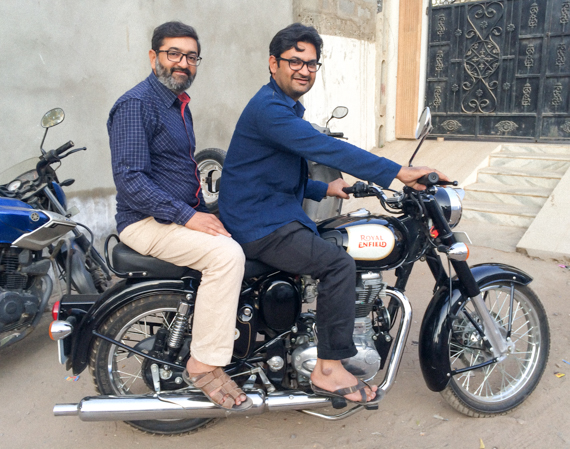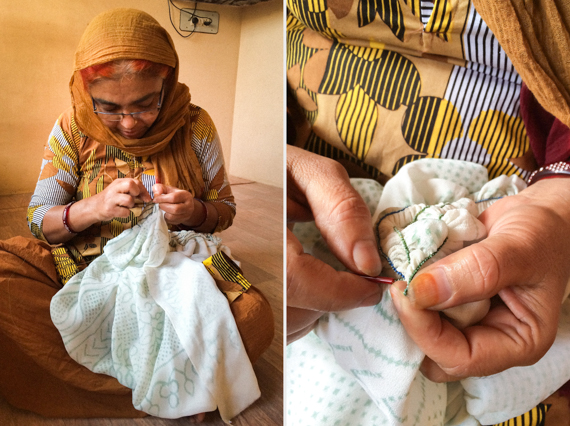b
badla

badla (India)
Gujarati term for a flattened, pliable metal ribbon used in traditional Indian metal embroidery wherein it may be pierced, crimped, stitched, or couched onto the surface of a fabric. Traditional badla embroidery is believed to have come to India in the sixteenth century via the second Mughal emperor, Humayun. After exile in Persia, Humayun returned to India bringing with him Persian artists to influence Indian courtly arts. Once made of gold or silver, today’s badla is electroplated silver or copper and sold in half-meter (19 in.) bundles in three different weights.
We have been using badla since 1999. When used for patterns of small dots, the work is known simply as badla in Gujarat. This type of embroidery is performed primarily by women at home. In this technique, as seen in our Traveler 2010 Orion collection, metal ribbon is threaded on a needle, pierced through a cloth’s surface into a small hexagonal knot shape, and flattened with a glass bottle or cowrie shell. A frame is not required. Badla is also used in dimensional embroidery known as zardozi. Fabric is stretched on a frame and badla is couched on the surface with needle and thread. The metalwork remains on the surface of the fabric only, never touching the skin. Zardozi is done in workshops mostly by men in Kolkata. See also zari
bandhani


bandhani (India)
Ancient tie-dye technique characterized by a constellation of very fine dots. The technique derives its name from the Sanskrit word banda (to tie). Fabric is pinched dot by dot with one’s fingernail or small tool, then tightly tied with fine cotton thread into individual knots or a continuous line of bound dots. Fineness and evenness of dots (bindi) are a measure of one’s skill and dexterity. Bandhani can easily be applied to many types of fabrics or layered over other textile techniques, such as piecing and patching, making it an effective design tool for bringing aesthetic cohesion to our engineered recycled fabrics. Since 2001, our bandhani textiles have been made in Kutch, Gujarat, by the Khatri brothers, who bring a fresh eye to the craft. These educated young men chose not to work in the banking industry like their father, but rather follow their heart’s calling to revitalize the traditional craft of their ancestors. Their experimental approach allows us to continue exploring creative applications beyond the traditional. See also recycled bandhani
bigbendsaddlery

Big Bend Saddlery (USA)
A western leather goods outpost committed to using domestic leathers and hand making goods in-house. It remains one of the last places in the US to make leather saddles by hand. The saddlery opened in 1905 in the west Texas town of Alpine, just north of where the Rio Grande River makes a big northward bend as it passes between the Chisos Mountains and Sierra Madre Oriental in Mexico. Connected to the store is a workshop where co-owners Brett Collier, Gary Dunshee, and Carla Spencer have been making custom leather goods for dosa since 2013.